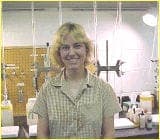
Curated with aloha by
Ted Mooney, P.E. RET

The authoritative public forum
for Metal Finishing 1989-2025

-----
Duplex Nickel and Chrome Plating on Stainless Steel
Tip: Readers want to learn from Your Situation 🙂
(little can be learned from abstract questions, so many readers skip them)
Q. Want to find an alternative chrome plating process.
Agung TrisdianEmployee - Bogor, West Java
November 2, 2023
A. More words please Agung.
Readers would like to help, but need to understand your question. Please explain what your employer does, and what motivates your question. Thanks!
(We realize that you included contact info but, apologies, this is a public Q&A forum rather than a private matchmaking service).
Luck & Regards,

Ted Mooney, P.E. RET
Striving to live Aloha
finishing.com - Pine Beach, New Jersey
⇩ Related postings, oldest first ⇩
Q. We are a high volume production, chrome plating company supplying into automotive industry. The automotive companies have increased quality standard. Our problem is with duplex nickel and chrome, plated onto stainless steel. Inconsistent adhesion of nickel to base metal. (plating peels off)All parts on flight bar peels, not just individual parts.
Our current process (excluding water rinses):
- 1/ soak clean
- 2/ electroclean
- 3/ cathodic sulfuric acid etch. 30% acid. 5 amp per square foot.
- 4/ semi bright nickel
- 5/ bright nickel
- 6/ chrome
When we add woods nickel strike operation, after acid etch, we solve peeling problem but experience roughness, which is now deemed unacceptable to auto industry. nickel strike operation is cathodic and we have bagged carbon anodes. solution is filtered continuously. It is our understanding that if process is correct, you should not require a etch and then a strike operation.(you should be able to use either one. I am asking if anyone has experienced the same problems and what would some suggest solutions be.
Michael Hayward- Adelaide, South Australia, Australia
2000
|
|
A. We acid etch and Wood's strike our stainless parts. Using the strike is insurance so to speak. You should not be getting roughness out of the strike, though. Keep in mind that a Wood's nickel, like other strikes, is relatively sacrificial and should be made up new relatively often. Are you putting a lot of grit blasted parts through the strike and introducing media to the solution? Also what pore size filters are you using? If they're too large, they're useless.  Megan Pellenz - Syracuse, New York A. Keep your acid etch. Get rid of the carbon anodes. This is about the worst possible thing that you can put into a Woods strike tank. - Navarre, Florida |
A. Hi Michael ,
The answer lies in the amount of time & current density used in the WOODS nickel Strike , as this process does not use any Brighteners , levelers if used for too long it develops what appears to be roughness but is actually nodulation . Cure is to check everything , Anodes , anode bags , they should be double or napped polypropylene , is the filter effectively filtering the solution , you are not just taking from & delivering to the same area of the tank are you ?
regards

John Tenison - Woods
- Victoria Australia
Q, A, or Comment on THIS thread -or- Start a NEW Thread
